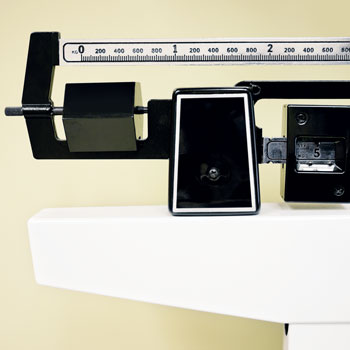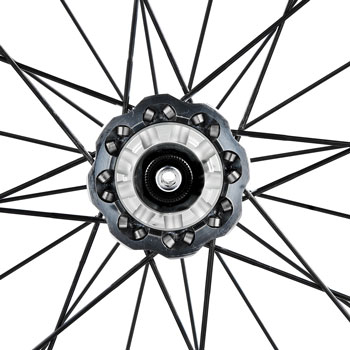Motion is the notion for diagnosing shoulder pain
A 60-second examination of the shoulder coupled with a conceptual model of how the shoulder works can help interpret examination findings and make an orthopedic diagnosis.
One of the more common things that doctors will ask me is, "I've got this patient with shoulder pain, I did an examination, and all these maneuvers were painful. How do I sort that out to come up with a single diagnosis of the shoulder?"
Two pearls can help. The first is a 60-second, functionally organized, abbreviated examination of the shoulder. The second is a conceptual model of how the shoulder works as a machine to help interpret examination findings and come up with an orthopedic diagnosis.
With regard to the functional examination, there are generally three things that I'm checking for. The first is the range of motion. I'm going to check motion in three directions: forward flexion, external rotation, and internal rotation. First, to check forward flexion, I ask the patient to raise their arms all the way overhead. Normal is to see full symmetric pain-free range of motion. Second, to check external rotation, the patient places elbows against the body and extends their forearms in front of them, and I ask them to externally rotate (to rotate their forearms outward). Last, to check internal rotation, the patient puts their thumbs in the middle of their spine and raises them up the spine as high as they will go. I want to check for symmetry or minimal asymmetry, and I want to know if there's pain. If the patient has a deficit in active range of motion in any direction, I want to see if the range of motion deficit is there passively as well.
The next functional thing I'm going to check is their rotator cuff strength. I test the rotator cuff in the order of the acronym "SITS" that we learned in medical school: Supraspinatous, Infraspinatous, Teres minor, and Subscapularis. To test the supraspinatous, which performs forward flexion, I ask the patient to push their arms up to the level of their shoulders, with their thumbs pointing down. I then position my hands over their forearms, and instruct the patient to raise their arms further overhead while I apply downward resistance. I want to see 5/5 symmetric pain-free strength in the arms, and I make note of any asymmetry in pain or strength. I test the infraspinatous and teres minor next, which are the external rotators. To test this, the patient starts with their arms against their sides, with their elbows bent at 90 degrees, so their forearms are pointing out in front of them. I position my hands outside of their forearms, and ask the patient to externally rotate against my hands (keeping their elbows against their side, they rotate their forearms away from the midline of their body), while I provide resistance. Again, I'm looking for anything other than 5/5 symmetric pain-free strength. Finally, the subscapularis is the internal rotator of the shoulder. I test internal rotation with a liftoff test. The patient places the back of their hand in the small of their back. I ask the patient to lift the back of their hand off of and away from the small of their back, and then I as the examiner will resist them. I want that to show 5/5 symmetric pain-free strength as well.
The last function that I'll assess in this abbreviated exam is to evaluate for impingement. The two impingement maneuvers I like are the Hawkins and the Neers. For the Hawkins I'm going to passively flex the shoulder in the frontal plane to shoulder height, and I'm going to internally rotate to see if that reproduces pain in the shoulder. For the Neers, I'm going to forward flex the arm to shoulder height, then I'm going to internally rotate to the shoulder, and finally I'm going to forward flex the shoulder the rest of the way up all the way past the ear. I'm looking for pain at the end range of the maneuver.
In review, the first pearl is a functionally organized examination of the shoulder: I'm testing range of motion in three directions; I'm testing rotator cuff strength in order of the "SITS" mnemonic; and I'm testing two impingement maneuvers. It's an abbreviated examination, but it can lead you to a diagnosis in most of your patients with shoulder pain.
The second pearl is a conceptual model to help you interpret that examination to come up with a specific diagnosis. I think of the shoulder as being a machine. There's two parts to this machine, the glenohumeral joint and the rotator cuff. The analogy is that this shoulder machine is like the automatic door at the grocery store. You step on the mat, and the door swings opens for you. In this model, the hinge of the door is like the glenohumeral joint, and the cable that pulls open the door is like the rotator cuff. In order for the door to swing open, both the hinge has to be freely swinging, and the cable has to be strong enough to pull open the door.
So one day you go to the store, you step on that mat, and that door opens halfway and gets stuck. So you grab it, and you try to push it open the rest of the way, and it still doesn't open any farther. What's wrong with that door? The problem is that the hinge must be rusted shut.
Similarly, you might have a patient whose shoulder hurts, and it's so painful that on examination they can't actively lift their arm overhead. You then try to passively forward flex their arm the rest of the way overhead for them, and sure enough, it doesn't go any further up. You continue to test their range of motion, in external and internal rotation, and the affected shoulder has lost active and passive range of motion in both these directions as well. That patient has a stiff shoulder. They've truly lost range of motion, both actively and passively, in every single direction.
Since range of motion at the shoulder is happening at the glenohumeral joint, to further evaluate decreased range of motion, I order an X-ray and look at the glenohumeral joint. Glenohumeral degenerative joint disease (i.e., glenohumeral DJD or glenohumeral arthritis) can cause shoulder pain, and the more advanced the arthritis, the more extreme the loss of motion. So, if the X-ray of the stiff shoulder shows glenohumeral DJD, I'm very suspicious that the glenohumeral DJD is indeed the cause of the patient's pain and loss of motion. Alternatively, if the X-ray shows no glenohumeral arthritis, then it must be the capsule around the glenohumeral joint that is restricting the glenohumeral motion. So in the patient with a functionally stiff shoulder, and an X-ray that confirms the absence of glenohumeral DJD, that patient likely has adhesive capsulitis.
Returning to our door analogy, the next day you go to the store, you step on the mat, and the door only opens halfway again. You grab the door, but this time you can push the door the rest of the way open. The hinge must be working just fine. It must be the cable that's not strong enough to pull that door open for you. This is like the patient who comes in and says, "My shoulder hurts, I can't lift my arm overhead," but when you lift it for them, it goes all the way up overhead. They may not have the power to lift their arm overhead, but their passive range of motion is not decreased. That patient's not stiff; that patient is weak. This is not a problem with the hinge, but instead it's a problem with the cable (which is not strong enough to pull open the door, or lift the arm overhead). In the case of the shoulder, the cable is the rotator cuff. That person has a rotator cuff tear.
Lastly, on the third day you go to the grocery store, you step on the mat, the door opens all the way, but it's making this terrible, scraping sound. It's groaning to get all the way open, but it does open all the way. The hinge must be working, and the cable is strong enough to swing the door open, but the cable is scraping in its housing. This is like the patient who tells you, "Doc, it hurts to lift my arm overhead. I can get it overhead, but it's really painful." When you test their range, the patient might have pain at end range, but ultimately does not have a significant range-of-motion deficit. When you test their strength, there might be some discomfort, but ultimately the patient does not have true weakness. Finally, when you test that patient's impingement maneuvers, when you put that shoulder into a position that impinges the rotator cuff, it reproduces their pain. That patient is impinging their rotator cuff.
To summarize the second pearl, I think of the shoulder as a machine that needs a working hinge and a working cable. I consequently sort examination findings into: 1) Is it a range-of-motion/stiffness problem? That would be the hinge, or glenohumeral joint and/or joint capsule. 2) Is it a strength problem? That would be the cable, or rotator cuff. 3) Or are they scraping or pinching the rotator cuff as the shoulder moves through its arc? That would be impingement.
Finally, I have some colleagues tell me that they understand the model, but there's a lot of maneuvers to remember for the exam. My last tip is to just remember the rotator cuff mnemonic "SITS." You're running through SITS twice. The first time you're doing it for range of motion in the supraspinatous direction (forward flexion overhead), the infraspinatous and teres minor direction (external rotation), and lastly the subscapularis direction (internal rotation). The second time you're doing it for rotator cuff strength. If you can remember that, then all you have left is to learn a couple of impingement maneuvers and you've got this whole exam.
There's a lot of other things that can go wrong in the shoulder. The acromioclavicular joint, the biceps tendon, instability, neurologic problems—they could all cause shoulder pain and dysfunction. But in terms of having a systematic way to approach to the patient with shoulder pain, remembering this abbreviated exam and understanding how to interpret it will get you the diagnosis 80% of the time.





